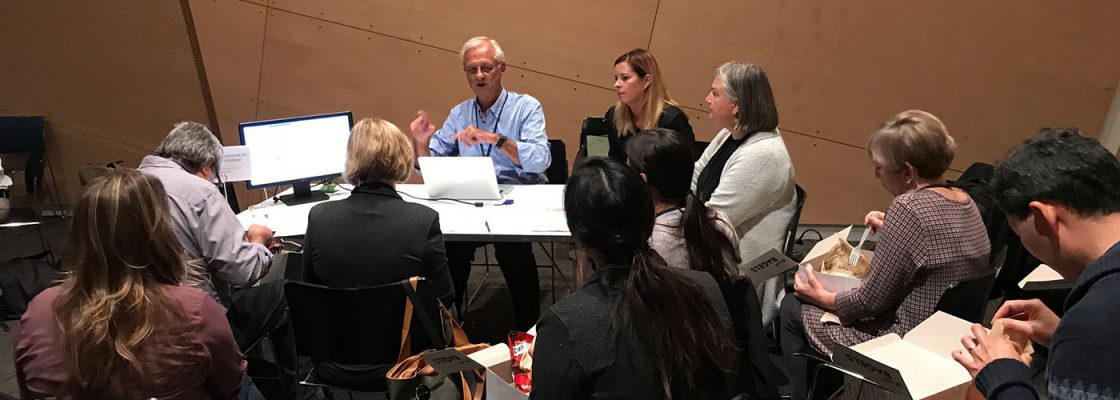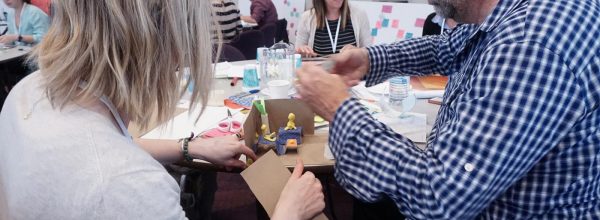Every SNIN meeting, we create a theme to unite our workshops and speakers. Given the tumultuous times we are in, it was challenging to identify a unifying topic for our gathering, when we began planning six months ago, that would stay relevant. This year has been filled with near misses with Congressional repeal-and-replace efforts, and when we simply weren’t sure what would be important for attendees.
We settled on the theme of “Grounding Innovation” because the “soft” skills to support innovation and change would critical no matter what happened in the world. We set out to explore how to strengthen your infrastructure and engage your team, so that you can better generate ideas, create lasting change, and reach those sky-high goals.
Here are our staff’s top “SNINsights” from the two-day event:
1. Welcome Newbies!
When CCI Executive Director Veenu Aulakh asked if there were any first-timers in the room, nearly a third of attendees raised their hands! It was incredible to see many newbies embrace working and doing things very differently. For us, it solidified the importance of exposing the safety net to innovations and design thinking.
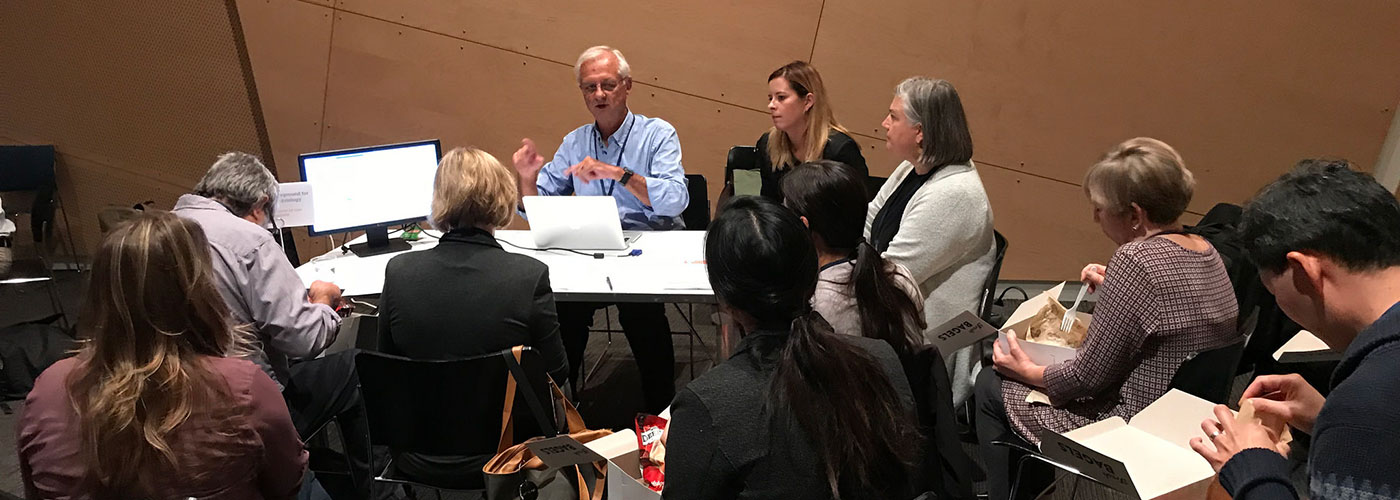
2. Super Powered Change Starts with an Outlook Reminder
In her workshop, Keely Killpack gave us the tools to successfully lead a change. One that really resonated: At the top of the week, add an Outlook reminder that asks, “Who do I need to be this week?” There are several roles: The Storyteller helps others to have confidence in the change. The Superhero walks the talk, pushing projects through. The Spark of Energy believes in the change, motivating people to tackle the next step. As Keely says, it’s all about removing barriers for a team to succeed and supporting other leaders in shepherding employees through the change experience.
3. Ask the Right Question
There’s so much power in the way you frame a problem. How narrow or wide you frame your problem will determine what kinds of solution ideas you generate and influence the rest of your work.
Nowhere is this more important than health care, where we tend to assume that there are so many things we can’t do because of regulatory barriers or difficult environments. Perhaps we need to follow the lead of Steve Brown, the “bald futurist” who kicked off our meeting, by toggling between the questions of “What is the future we want to build?” and “What is the future we want to avoid?”
4. When You’re Out of Ideas, Look to the Future
Steve Brown introduced SNIN to “futurecasting,” or predicting the future, a powerful approach if you’re looking to think strategically and rally your team around a new project. It’s a process that relies on expert testimonies, synthesizing trends, developing personas, and science-fiction prototyping.
But predictions aren’t enough. The cool – and in our view, most useful – part of this exercise is uncovering what is possible and the actionable steps needed to achieve it. Through “backcasting,” Steve taught us to work backwards from our goals to identify the roadmap that must be followed to get from the present to the desired future. What are the opportunities and risks? What can you start working on tomorrow? Only then can you understand, as Steve says, how to best take advantage of the possibilities ahead.
In health care, we so often move minute by minute, without taking into considerations the bigger picture, or implications of trends on how we do our work. Steve really forced us to confront that status quo when he spotlighted Amazon and the retailization of health care. We know our health care system is broken. But we spend a lot of time and energy on incremental changes or small improvements, while other industries and sectors are working on ways to totally re-design and re-conceptualize what health care is and how to access it. How can the safety net be ready and prepare for changes that we’re not currently anticipating?
5. Follow the Six Simple Rules of Influence
Ed Tori taught us the science of persuasion, or, as he calls it, influence. It’s a powerful approach to convince others to act in a certain way, no matter the setting or the situation. These tools can be used to convince your child to eat broccoli. They can also help urge your patient to quit smoking.
According to Ed, an influencer must follow six simple rules:
- Manage your state.
- Make the person(s) you are trying to influence comfortable.
- Remove any objections early on.
- Move people with what already moves them. Acknowledge what’s important.
- Comment on and acknowledge the remarkables.
- Design in awesome, design out pain.
We could probably spend several hours just discussing Ed’s presentation. Laughter filled the museum and orders of the Snake Oil game piled up in Amazon shopping carts.
But it’s that first rule that really stood out for us: “Manage your state and the rest will follow.” Ed talked about how every time he enters a patient room, he uses the door knob to ground himself. He takes this moment before entering the room to remind himself that the patient is the most important person and that his job is to serve them. It was a good reminder of the importance of finding your own personal “door knob” to ground and center yourself in any situation. Get your game face on – word choice, body language, and empathy. The key to influence is authenticity.
6. Social Proofing Works
Ed Tori also taught us that if you want people to do something, show them that a lot of people are already taking that action. For instance, “Why don’t you eat more broccoli? Nearly 90 percent of kids love eating broccoli!”
This becomes harder when you’re trying to move people to an unpopular behavior. Ed pointed out that blood banks do social proofing really poorly. Pointing out that only 3 percent of the population gives blood doesn’t encourage people to donate; in fact, it makes them wonder what’s so scary about the process that so few people are giving blood. Instead, we should be following the example of Heifer International, which flips the conversation by talking about the impact of a single person’s behavior change. Positive motivators! For instance, Heifer tells us, “Ruwaida and Salehe Abdul’s family received a goat from Heifer. The gift of a goat has changed their lives forever. For $120, you can make a difference to another family just like the Abduls.”
Coincidentally, one of our innovation safaris trekked to Blue State Digital, the strategy firm that works on the Heifer International campaign! Blue State hammered home the importance of social proofing by walking us through its successful Freedom to Marry campaign. To build momentum, Blue State launched a series of sharable graphics that helped make the case that America was ready for marriage nationwide. One read, “58% of Americans believe that same-sex couples should have the freedom to marry, and I’m one of them.” That graphic alone resulted in 3.5 million impressions on Facebook.
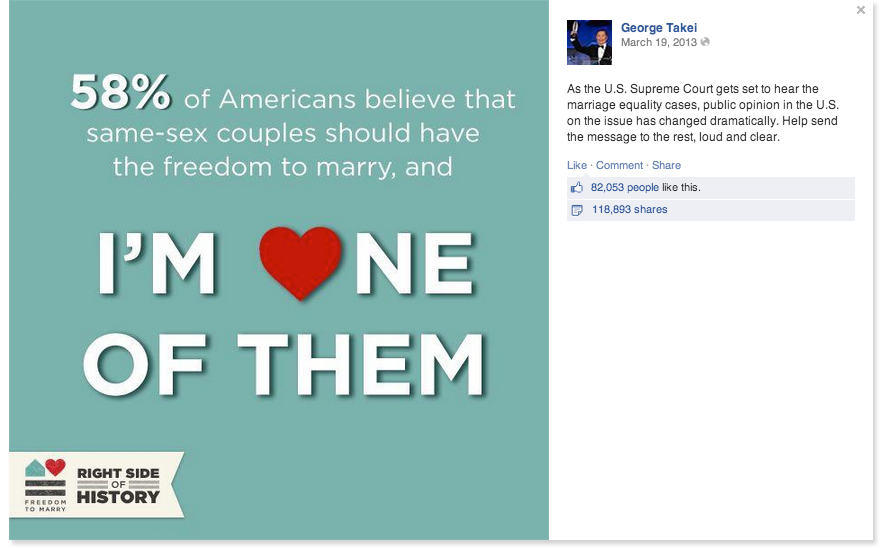
7. Hope Is Powerful
Another innovation safari went to Zoo Labs, a nonprofit community dedicated to artist development. One of the incubated groups, SoL DeVeloPMeNT describes its work building up black and brown youth as being largely about instilling hope in young people. Separately, BE Imaginative is using storytelling to create art in communities across the state. The first project went to Sacramento to interview and photograph three mothers who have lost children to gun violence. The collaborative then took the images and stories and turned it into a music and community art display.
It’s hashtag? #DisruptHopelessness
8. Strong Parallels Between Health Care and Hospitality
On our innovation safari to Waterbar, even our preparation opened up a number of interesting conversations about the similarities between the health care sector and the restaurant industry. On the visit itself, we saw how restaurant staff huddle before shifts in ways similar to care teams. We learned about how restaurants struggle with retaining staff, how they find ways to work within the constraints of their physical environments, and how they approach customer service – all common issues we also face in the safety net.
9. Employee Engagement Never Stops
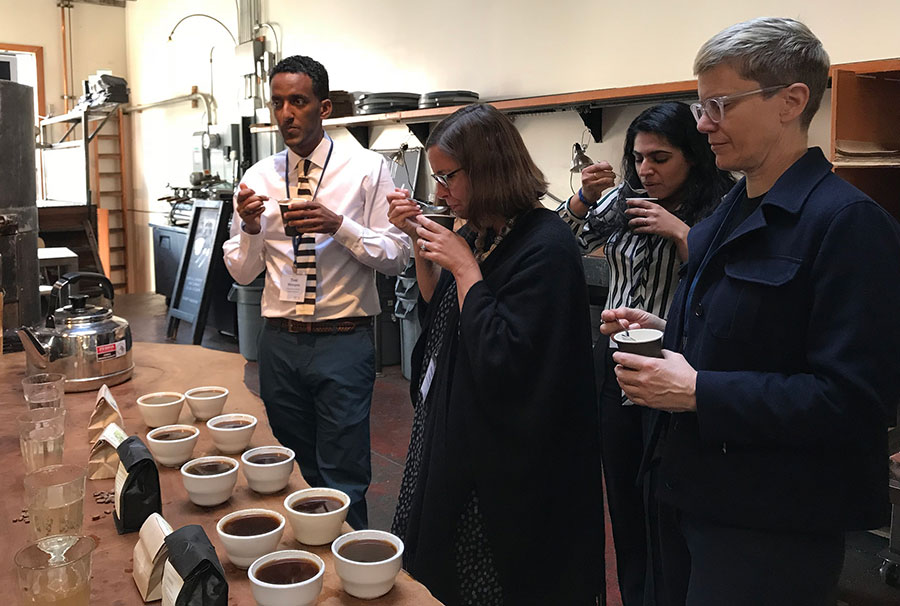

Four Barrel Coffee told safari goers that it has successfully minimized employee turnover by organizing a series of small trainings every week. It also hosts regular “family nights” throughout the year instead of hosting one blowout holiday party.
Too often we’re weighed down by the size of our umbrella organizations. It’s too much work, too much planning to put on events. But maybe we should be focusing on small activities within our small clinics. Perhaps a dozen little events can be worth more than one big team building extravaganza. Four Barrel really proved that less can sometimes be more.
10. Open Spaces, Open Minds
When architect Daniel Libeskind designed the Contemporary Jewish Museum, he expanded the historic 1907 Jessie Power Street Substation with a modern “angled, glowing blue steel-clad structure.” It’s a powerful connection between tradition and innovation. It’s no wonder that the venue helped encourage attendees’ creative, out-of-the-box thinking.
11. Carve Out Time
A lesson we learned from both adaptive change advisor Deya Greer and Steve Brown: There are many ways to do strategic planning, but the important thing is that you need to carve out time to work on the complex issues that are easy to let fall by the wayside.
12. Compassion Isn’t Always About People Who Are Suffering
Cyndee Lake of Blank Page taught us the most effective leaders are curious, committed, and courageous in their pursuit of understanding what others need and why.
Find this useful or interesting? We’re constantly sharing stuff like this. Sign up to receive our newsletter to stay in the loop.

